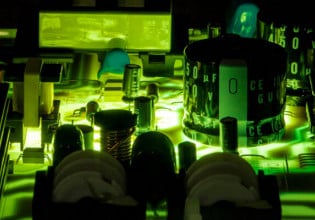Vishay Releases 45 and 100V Schottky Diodes With Current Ratings From 6 to 20A
Vishay Intertechnology, Inc. launched four new Gen. 5.0 high-performance 45 and 100V Schottky diodes which the company states set a new standard in the industry by extending the D-Pak current capability up to 20A. Built on submicron trench technology, Vishay says the devices are suitable as stand-alone packages for high-efficiency, high-density solutions, as well as offering a cost-effective and compact replacement for the D2-Pak package.
According to the company, the 6CWT04FN, 10WT10FN, 20CWT10FN, and 20WT04FN offer a maximum junction temperature to +175°C, extremely low forward voltage drop, and low reverse leakage, allowing designers to increase power density in automotive, solar energy, and other high-temperature applications. All four devices are also available in I-Pak versions.
The Schottky diodes released today feature maximum forward voltage drops at +125°C of < 0.54 V typical at 6 and 20A for the 45V devices, and < 0.65V at 10 and 20A for the 100V devices. Reverse leakage at +125°C is 3 and 7mA for the 45V diodes and 4mA for the 100V diodes, with very tight parameter distribution. The devices offer optimized VF versus IR trade-off for increased system efficiency.
The diodes are optimized for ac-to-dc secondary rectification, flyback, buck and boost converters, half-bridge, reverse battery protection, freewheeling, dc-to-dc module, and solar photovoltaic bypass diode applications. Typical end products include high power density SMPS; adaptors for desktop PCs; servers; consumer electronics like PDPs, LCDs, and high-efficiency audio systems; and mobile electronics such as notebook computers, cell phones, and portable media players. The diodes are AEC-Q101 qualified for automotive drives and controls.
A high and stable breakdown voltage of 57V typical for the 45V devices, and 118V typical for the 100V devices, accommodates voltage spikes and optimizes power density, which is increased in the diodes by 25%. The devices feature 30% increased ruggedness for reverse avalanche capability, with parts 100% screened in avalanche, and negligible switching losses.






